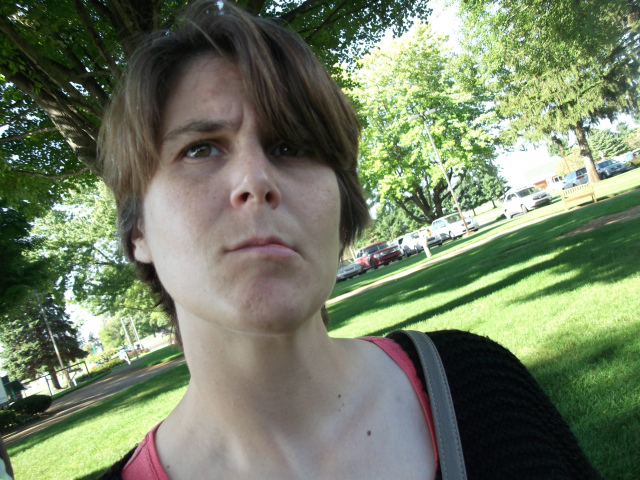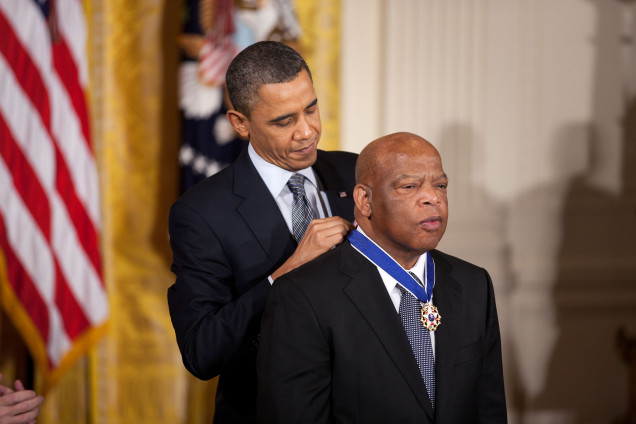With it being a new year and all, the tradition of setting myself goals, targets, and new projects invariably raises its head. Come on, we have all at some point gotten on the resolutions bandwagon and then inevitably failed to stick with at least half of them by the time we hit February.
With that in mind, last year I began my Happiness Project, and I wanted to share that experience with you today.
The idea of the Happiness Project is not mine, that credit belongs to the author Gretchen Rubin, and I fully recommend you find a copy of her book of the same title and give it a go; it’s an interesting, engaging and fun read. The concept of the Happiness Project is basically this: that your life may not necessarily be filled with unhappiness, nor does it suggest you are profoundly unhappy overall, in fact you might be quite alright with things in general, BUT you might be like me and feel that there are certain elements of your life that could do with a morale boosting injection of happiness every now and then, little things to be tweaked so you felt a little happier all round in the overall grand scheme of things.
The project does require some effort on your part, for it is a project; not a list, statement, or resolution hastily scribbled in your diary in the minutes leading up to Big Ben at midnight. It really does require you to think about yourself and fundamental aspects of your life and personality, albeit in a simple fashion; making you take an in depth look at what really makes you feel happy, what makes you feel bad, and what things are neither but just somehow you don’t feel quite right or content with them.
So I thought for those of you out there possibly looking to make some changes in your life this year, or perhaps wanting to just take stock of your inner self and what makes up your life, I would outline the process I have gone through in case you wanted to give it a go. I will say that although I haven’t fully completed my project and begun to implement my changes yet, I did find that the first stage of simply sitting quietly and really taking stock of my inner self did me a world of good for clearing out the cobwebs and giving me more clarity of mind.
 Mind…before clarity
Mind…before clarity
Right then, here we go…
First things first – the three lists. When you attempt this, you really need to be in a quiet area, free of all distractions to give your mind the best chance at thinking. I took at least 45 minutes, if not an hour, to come up with a decent list and then kept coming back to it for a few days to make sure it was really complete.
I started with the ‘things/activities that make me feel good’ and was pleasantly surprised that this was my longest list of the three. I will give you some examples I came up with in case you need a bit of a nudge to start (you might be feeling like there’s nothing making you feel happy, fun or energetic, but I think you’d be surprised):
- Cycling on my bike
- Learning something new
- Taking a long hot shower
- Petting or hugging animals
- Ticking off a To Do list
- Dancing and singing along to music
- Getting up early in the morning and doing things before Loops is awake
So as you can see, these are very simple little things that give me a either a small bloom or a big burst of happiness, things that I probably don’t think about in general day to day goings on and in some cases don’t do nearly enough of. However I now understand that they are important things to include in my life on a regular basis so I feel good, but that I also need to apply the recognition that it has made me feel good about myself or my life in general to get the full benefit of it (if that makes sense).
 Something that made me happy
Something that made me happy
Time for the second list – ‘things that make me feel bad’. Now I don’t like to admit this, but this was probably an easier list to create because if I’m honest, I was probably born more a pessimist than optimist, so finding things that cause irritation, anxiety or frustration comes a little more naturally (though I did read an article recently that suggested that pessimism is a survival mechanism so that you are always on the lookout for danger).
Again, just a few examples from my list:
- Not successfully being able to talk to new people and make friends
- Yelling in anger
- Crying
- Feeling a lack of control
- Lying in bed for too long in the morning
- Not feeling recognised or appreciated when I do something well
Once I completed my ‘feel bad’ list, I promptly had to go get a cup of tea and some chocolate, because it actually did make me feel really upset to think about all of the things that cause me to feel bad about myself and my life. I think with this list though, it’s really important not to just throw in ANYTHING AND EVERYTHING that could possibly make you feel bad. If you are currently feeling down about life, this could be a really easy thing to do. In my opinion, the point here (and to get the most from the resulting project) is to be very specific about what crops up on a regular basis and causes you to feel bad. Also, although I didn’t list them here, a number of my ‘feel bad’ things actually were to do with other people and what they did or said to me which then made me feel bad about myself. So that’s worth bearing in mind too.
 The sheer amount of junk food that may be required after the ‘bad’ list
The sheer amount of junk food that may be required after the ‘bad’ list
The last list I found the hardest to complete, maybe because I didn’t really understand the concept correctly from when I read the book, but I gave it a go anyway. These are to be things that are not happy or bad, but some aspect of your life that just doesn’t quite feel right and needs changing in some way to help you live up to your expectations. Here’s what I came up with:
- Being able to live more in the present rather than worrying about the past or future
- Being less critical of myself and others
- Feeling more positive about my current lifestyle
Now that we are armed with these new insights about our character comes the next bit, which is both a challenge but pretty fun too. Now is when you come up with your Personal Commandments – the overreaching principles by which you want to try and live your life. This is where reading Gretchen’s book comes in really handy for ideas and guidance, so I suggest you try and get a copy to steer you in the right direction, but again, here’s what I tried.
I sat down with my three lists in front of me and gave real thought to how all of these things affect me; how much I wanted to try and implement more of the happy aspects overall, but more importantly what I could do to decrease the bad aspects so that by way of balance, my life would then become less bad and more happy as a result. And then somewhere in there, try and find some ideas about what could help with the ‘stuck in the middle’ changes I wanted to make.
Before I could come up with any very specific changes though, I needed to use all of this thought to come up with some very large and all-encompassing ideas about what I wanted my life/personality/general live-by principles to be, so I could then look at what I currently was achieving and what I needed to work on (I really hope you’re still with me by this point….)
And if by now you are feeling all sorts of confused, again, here’s a general overview of what I decided my 10 Personal Commandments/overreaching life principles should be:
Be Me – don’t give up on being myself for others. Remember I am strong and capable on my own. Keep my quirks, they are part of who I am. It is not my problem if someone doesn’t like something about me, I like who I am and that’s what counts.
Look after myself – physically and mentally. Make the effort to exercise for body and soul. Remember I feel better when I eat well and work hard physically. Remember I look fine no matter what others think or say. Take time occasionally to catalogue my strengths to help enable me to have a strong sense of self-esteem.
Let it go – don’t let small problems anger, frustrate or worry me. Always remember life’s big picture. Don’t continue to bring up past problems. Don’t hold things against people. Holding on to negative things does nothing but kill my heart and spirit, it only hurts me, not others. Say my piece, if I must, and then move on.
Find new friends – be more forward in meeting people. Temper the shy personality. Make a point to remember people’s names. Ask questions and show interest in others. Learn how to introduce myself and make conversation. Remember I have a wealth of experience and stories to share with people and they might be interested in hearing from me.
Be polite and be fair – don’t speak to hurt. Don’t intentionally say things to be mean and pretend you didn’t know it was mean. Remember that just because you think you’re right, doesn’t mean you are. Remember other people have different ideas, don’t disrespect them, even if you don’t agree.
Do it for me – don’t do things for praise or acknowledgement of others, I will just be continually disappointed and hurt when I don’t get it. Find the value to myself in the task I am completing. Be proud of my own accomplishments. Remember everything I do helps me to grow in some way. Remember that other people can be proud of me or thankful, but just don’t voice it.
Love purely – do not put restrictions or caveats on my love. Give love in good faith. Look only for the good in my relationships. Repair damage to love quickly. Take time and care to resolve issues that cause my love to falter. Remember that love comes in many forms, that it can be expressed in ways other than how I give love, remember to look out for it.
Lighten up – stop worrying unnecessarily. Don’t immediately think of worst case scenarios. Don’t continue focussing on problems. Choose activities I enjoy and enjoy them fully! Do things that make my heart sing and put a smile on my face. Concentrate on being light of heart. Remember that I am not responsible for someone else’s happiness, just my own.
Identify the problem – work on preventing arguments and stress, rather than having to make up for them. Take time to find the root of a continuing problem. Focus on how to alter the issue. Talk problems through. Be calm when trying to resolve a problem involving something else. Walk away from a situation that is escalating until I feel able to calmly deal with it.
Take control and own it – be less subservient and make my own decisions, especially ones that affect me. Recognise that I am responsible for my own life’s journey. Stop blaming other people when I am unhappy or when things don’t go the way I want or expect them to. Put more effort to make things work instead of giving up so easily.
So there we have it. The overreaching principles to try and live my life by. These are the areas (in no particular order) I have identified as most important to me and hope that they will help provide a framework to the life I want to lead, to be the sort of person I want to be; which in turn will lead to me feeling more fulfilled, less bad and, hopefully, more happy on the inside.
 A happy me.
A happy me.
I’m glad I have taken the time to really question myself about what I feel to be important aspects of my personality and life. I believe that I have confronted honestly my bad points and tried to clearly outline for myself the basic foundation which will help to rectify issues that I feel I have. At the same time I have tried to acknowledge that I already have good things about me and in my life (I just need to remember them!) and to give myself permission to include more of my happy things in life without feeling guilty for it.
I am pleased I have written my list down. I find the fact that I can simply pick it up any time I need and remind myself of these things to be extremely useful in reinforcing them. I probably should do it more often, maybe on a monthly basis.
For those of you wanting to complete the final step of the Happiness Project, which I mentioned I haven’t done yet, here is what it entails. Using now all of the information and insight you have gathered, it is now time for something that us in the teaching world love – SMART targets. *rolls eyes*
It is perhaps due to having been beaten over the head with these for 6 years while teaching (“Set your students SMART targets! Have they achieved their SMART targets yet?”) that I have simply glanced over this stage for now. If you have not had the pleasure of being introduced to the concept of SMART targets, let us meet their acquaintance now.
SMART simply stands for – Specific, Measurable, Achievable, Realistic, and Time-based.
Wow, that came back to me far too easily!
Put simply, you now need to come up with just a few detailed targets to try and meet for each month of the year based on the principles and lists you created earlier. You have identified what you want your life to look like overall, but now you need to pick out specifically what changes you wish to implement in your life, and do so in a bite sized way.
Let me give you an example I could use from my project:
I stated in my principles that I wanted to look after myself better physically, that it made me feel good to exercise and be healthy, and in my happy list I wrote that riding my bike made me feel good. So logically, my SMART target should look something like this:
Ride my bike for 20 minutes once a week for the month of January.
According to my SMART target formula…my goal is specific – I haven’t just said I need to make sure I exercise more, I’ve clearly identified I will be bike riding. My target is measurable – I haven’t just aimed to ride my bike whenever I feel like it in a willy-nilly way, making it hard to say if I’ve completed my target overall, I’ve clearly stated I’m going to ride my bike for 20 minutes one day per week. That’s something easy to put on my To Do list and tick off when it’s completed. Is riding my bike once a week achievable and realistic for a set period of time – sure, why not? I’ve certainly got 20 minutes in my week to spare, I know I can ride my bike successfully without falling off, and we’ve yet to travel to a destination where riding my bike isn’t possible at least once in the week. Finally, is my target time-based? It sure is. I’ve set myself not only a time limit for the actual ride itself, but said I would do this only once per week AND that it only has to be done for January – so there is an end goal in sight after a month.
Boom! There you have it. My own Happiness Project SMART target based on my principles and lists, helping to make me feel happier by specifically putting time in to my week to ride my bike thereby making me feel better for both riding in general and taking the time to exercise and be outdoors.

With all that in mind, and taking it slowly each month, your Happiness Project will be complete once you set yourself some SMART targets to achieve throughout the year. You don’t need to think of tons of them, nor do you have to think of all of them right now. If you only want to try one thing each month, great, that’s a step forward for you. If you can think of four or five targets to set, have at it and good luck to you!
The point being is that hopefully by the end of each month, and eventually the end of the year, you will have managed to implement some steps to move yourself and your life in general a couple shuffles forward in the happiness stakes. And even better, you can clearly see and record the progress you make which, let’s face facts, is one of the things that brings happiness to most of us!
I just want to part with one final little suggestion if you are going to try and undertake your own project – if you are like me and work well with a little music to help you along, I enjoy going over to YouTube and typing in ‘The Most Beautiful Soundtracks’ and you’ll find a long list of collections of movie soundtracks which are excellent calming background music for thinking and writing.
Alright, it’s time for me to go and work on one of my happy things – to finish up a sewing project I’ve had in progress for a little while – today I get to tick it off my list as complete!
Good luck with your own projects and here’s a general wish of happiness to everyone out there reading this





